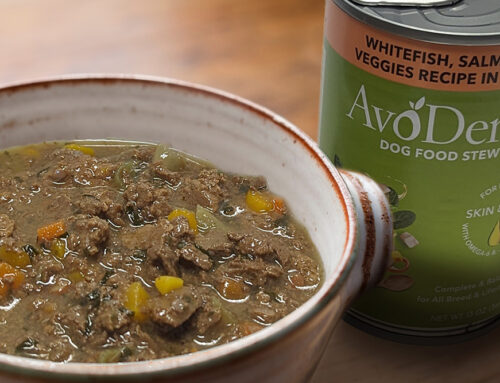Looking to adopt a new furry companion? When researching what breed you want, it’s important to consider how old your new dog should be. Sometimes the excitement of a new puppy overshadows what age of dog will fit best your lifestyle.
Puppies are almost undeniably adorable, but they need lots of attention and it’s difficult to predict how they will act when they become an adult. Older dogs can be tricky too, especially if poor health conditions occur early on in life. These are just a few considerations that make adopting a dog a challenging proposition.
Before you even decide on a breed, consider the cost statistics, common behaviors, energy levels, diet plans, and more when it comes to age. There are lots of different steps you can take to prepare for a new dog that will make the adjustment a little easier on them. These preparations can vary depending on how old your new dog will be.
Facts About Raising Puppies
If you can commit to the responsibility, puppies are awesome. They’re cute and clumsy, which makes it fun, but it also gives you a chance to start from scratch. Their behavior is a relatively blank slate and how they behave as adult dogs will be a direct result of your upbringing. This makes training them to your standards a bit easier.
Sadly, not everything about owning a puppy is exciting and cute. Puppies are very unpredictable. From their size to their health condition, you can expect a few surprises. The first thing to know as a new puppy owner is that younger dogs have specific nutritional needs.
Finding the right recipe for your pup will take some reading, but it’s important to get a brand they can thrive on. Most puppy food includes increased protein and a higher calories to support growth and energy levels.
Here are some things to look for when comparing dog food brands:
- Vitamins and minerals derived from plant-based ingredients
- High quality meat protein (no animal byproducts)
- Fillers like rice, oats, barley, or other complex carbohydrates
- A healthy diet will help mitigate illness down the road, but there are a few additional preventive practices you can take. This 6-month wellness care checklist is a great place to start.
Top 5 things your 6-month-old puppy needs:
- Vaccinations
- Spay or Neuter Surgery
- Dewormers
- Heartworm Prevention
- Flea/Tick Control
Seasoned dog owners or fosterers recommend bringing your puppy home to an environment where you can spend more than small periods of time helping them adjust. You’ll also want to puppy proof the house and do a little shopping. For starters, you will need a leash and collar, grooming products, food and water bowls, a bed, crate, and food. Oh, and maybe some carpet cleaner too in case of emergencies.
Adolescent Dog Facts
As with humans, the teen years are tricky. They reach adolescence between 4 and 10 months and become adults anywhere from 18 to 36 months. This maturity rate will depend on your dog’s breed and size, but small dogs tend to go through puberty sooner.
Another thing to remember with adolescents is that aggression in dogs usually appears around 9 months to one year. Keep in mind, some dogs are more likely to develop aggression later in life so do some breed research here. If you do notice any hostile behavior, deal with it immediately and be clear with your pup how serious the matter is.
Some other behaviors to look for in adolescent dogs include chewing, scratching, neurotic barking, jumping up on guests, and an interest to run off and explore. These habits can be reversed if addressed as they appear.
Your young adult dog will need specific nutrition as well. Their food should be high in protein and calories, much like puppy chow.
Feeding Adult Dogs
Once your dog is full-grown, it’s time to transition to another new diet plan. This will consist of a single- or dual-protein recipe, with a corn, wheat, rice, or other carbohydrate filler. Finding the right brand and ingredients will depend on your dog’s behavior, and is a decision best made after consulting your vet.
When selecting a new food, be sure to choose one labeled for adult maintenance or all life stages. Less active, lazier dogs should stick to adult maintenance labels only. The extra nutrients in an all life stages recipe are unnecessary but would do well for active dogs.
Research how much your dog should eat to avoid unnecessary weight gain. For most breeds, losing extra pounds is much harder than gaining them. To prevent any health issues associated with obesity, discuss adequate meal portions with your vet.
Adults tend to make perfect companions for first-time dog owners, or for anyone hoping to skip the most difficult phase of training. These dogs have settled into their personalities for the most part and will adopt few new behaviors.
Feeding Older Dogs
We’ve all heard the saying, “You can’t teach an old dog new tricks.” In most cases, this is true. If you’re considering adopting a senior dog, really think about their current state of obedience. When trying to change bad habits or teach them new skills, it’s not as easy as teaching a puppy. For first-time dog owners, this can be frustrating. On the other hand, you might adopt an older dog who’s already trained, which saves a lot of time and energy.
Dog food for older dogs can be a bit pricier too. The recipes have less calories, more fiber, and an optimal amount of protein for your breed. It’s important for your senior dog to get enough protein for a strong immune system and sufficient energy.
The additional protein also maintains muscles as they become increasingly important for joint support. Which brings us to our last point, veterinarian care. When adopting older dogs, you never know when sickness will strike. Research common health issues with the breeds to help predict vet costs down the road.
Finding Dogs for Adoption Near You
Nearly half of the American population owns at least one dog. According to the Humane Society, around 44 percent of these dogs are rescues, the rest were purchased from pet stores, puppy mills, breeders, or private sellers.
Once you’ve decided an appropriate age and a favored breed, now it’s time to look into where you will adopt. It can be costly to buy your dog from a breeder or a pet store. On average, the dog cost alone sits between $500 to $1,000, and can easily be more. You’ll also be responsible for vaccinations and a spay or neuter surgery.
Adopting a dog from a shelter or rescue will usually costs between $50 and $200. It may vary depending on if you go to a city shelter or a rescue group, and how much the organization spends boarding, grooming, and otherwise caring for their animals. This cost includes vaccinations and most of the time a sterilization surgery.
If you choose to take in a shelter dog, not only will you be saving a life, but often times it’s easier to reach out and ask follow-up questions after you’ve brought your new dog home. Rescue groups are especially good at doing their best to learn about a dog’s backstory and are happy to share any information or advice they discover.
There are so many factors to consider when adopting a dog that the process can be overwhelming at times. Just remember, your dog is feeling the stress too. Moving isn’t an easy process, for us humans either. But there are tons of ways you can help them adjust to their new home, which ultimately makes the process easier on you too.





